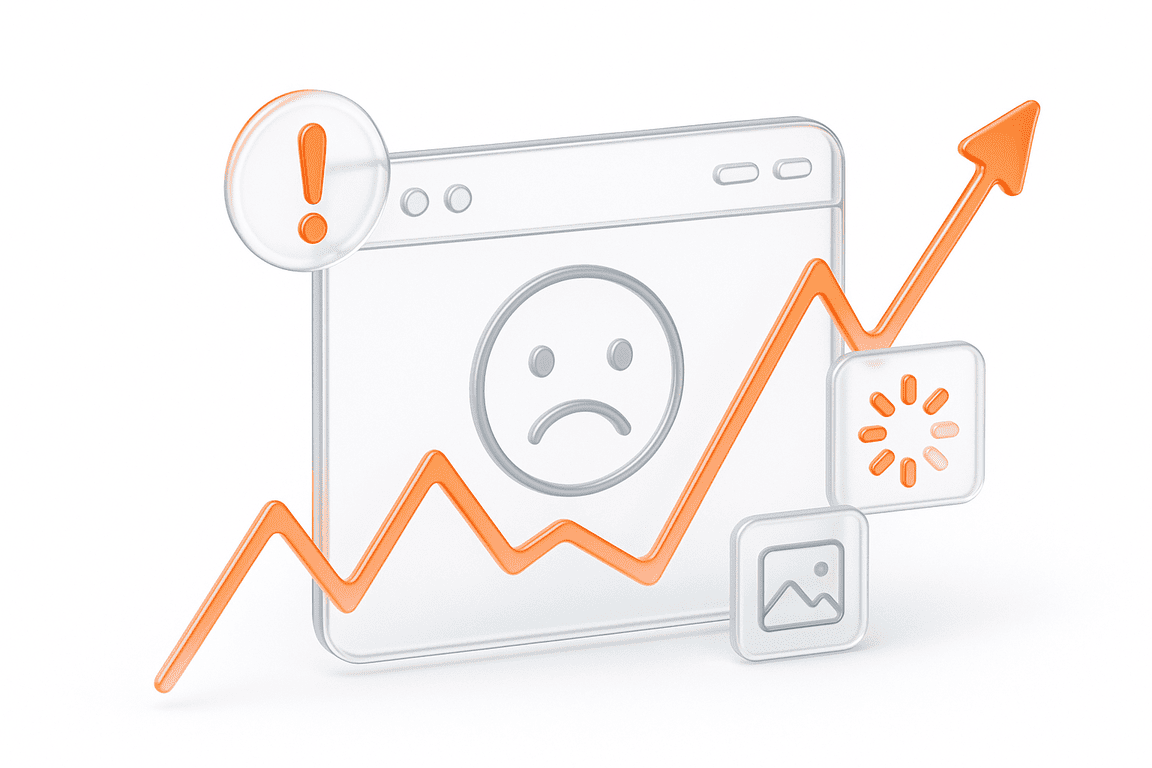The Importance of Stability and Reliability Testing in Software Development
There are aspects of software testing that often plant confusion in those new to the process — such as drawing the line between stability and reliability testing. The two are often used interchangeably and share a common goal of ensuring a system can perform steadily over a chosen time frame.
In this post, we’ll take a closer look at what is stability testing, the definition of reliability testing, their objectives, and their subsets. You will find out why missing out on stability and reliability testing increases the software maintenance costs and why it is an absolute must for business managers.
Reliability Testing Definition
The reliability test definition is an activity that determines if there are data leaks (stability testing) and how much time is needed for the system to recover after a failure (recovery testing). Beyond that, it also analyzes the behavior under peak loads and during (stress/spike testing) an emulated component failure (failover testing). The goal of reliability testing is to improve the mean time between failure (MTBF), mean time to failure (MTTF), and mean time to repair (MTTR) and offer a set of improvement guidelines for the development team.
The Objective of Reliability Testing
The chief goal of reliability testing is to validate the performance of the product under realistic conditions. Understanding key factors in measuring system reliability and availability is crucial for this process, as it provides insights into how reliability and availability metrics affect system behavior. There are other goals the testing helps project teams achieve — such as the following:
Importance of Reliability Testing in Software Testing
Software tools are used across all domains of modern society — including the most critical ones like healthcare or security. Since a system failure can result in financial losses, halt the development of entire industries, and cause casualties, it’s crucial for IT specialists to have ways of determining if a tool is reliable enough to be adopted on a large scale.
Here’s why project managers and company owners cannot miss out on stability and reliability testing:
Types of Reliability Testing
Software reliability testing includes several subsets that analyze the system from various angles, validate the intensity of failures, the efficiency of software recovery, as well as the amount of stress the application is capable of withstanding.
These are the most common types of reliability testing:
1. Stress testing
Stress testing refers to subjecting the system to a workload that’s beyond its original capacity (You can read about difference between load testing and stress testing here). In this scenario, QA engineers reach and exceed the breaking point of the system to observe the shutdown and calculate the time needed for a full recovery.
Here are the main stress testing activities:
2. Recovery testing
Recovery testing implies forcing the system to fail to observe and analyze the recovery process. The objective of recovery testing is to determine how much time a given application needs to restabilize after a crash or a hardware malfunction.
System failures are emulated during performance testing under normal estimated loads. Here are a few reliability testing example cases that fall into the domain of recovery testing:
3. Failover testing
A failover test verifies if the software is able to migrate all operations to a different server during a server failure or an outage and emulates the failures in associated systems. Ideally, development teams strive to implement automated failover meaning that the system will keep functioning properly despite the equipment, server, or network downtime.
4. Stability testing
Stability testing is a reliability testing subset that refers to validating the absence of resource leaks and the correctness of variable deinitialization. When running stability tests, software testers emphasize error handling verification and scalability.
The main objective of software stability testing is to determine the limitations of an application before the product’s public release.
Stability Testing Definition
Stability testing is a range of activities designed to validate if a software product can perform with no performance defects or crashes within or beyond established time frames under high stress levels. To ensure these tests are carried out effectively, teams often rely on advanced tools such as the JMeter cloud load testing tool to simulate high traffic scenarios and maintain system performance under stress.
Since the stability of an application can only be determined after monitoring it for an extended time frame, the testing activities include the repetitive execution of a test and comparing the outcomes with those of the initial outcome.
The Objective of Stability Testing
Stability testing is an essential part of quality assurance as it helps frame out the limitations of the software, gives more insight into the issues the project team will have to face post-release, and pinpoints the areas that should be improved before the launch of the final build.
Here are the main objectives of completing a stability testing protocol:
Importance of Stability Testing in Software Testing
A business manager can determine the stability of their software project only by examining it in an extended time frame. By putting heavy loads on the application and testing the system response, the project team is well-prepared to handle post-release issues.
Other than that, stability testing helps identify failures and crashes that will only show over an extended period of time — it’s the only form of testing that offers such a perspective.
As for the role of stability testing in quality assurance, here’s why this phase is an essential part of any testing cycle:
What Problems do Stability and Reliability Testing Solve?
Other than helping mitigate the risks of system failures and shutdowns by quickly pinpointing functionality and performance issues and ensuring the system will not degrade under high loads, stability and reliability testing solve a wide range of software maintenance issues.
Conclusion
Reliability and stability test processes help testing teams model the behavior of the software with striking precision and account for irregular failures, restarts, and shutdowns. These tests increase the visibility of all system components and provide deep insights for designing correcting mechanisms.
Project teams will have a better idea of the damage a heavy system failure can yield and the amount of time and resources needed to recover the system — no real-world scenario will catch you by surprise.
If you want a skilled team of software testers to check the stability and reliability of your project, reach out to PFLB. Our team of software testers is skilled enough to handle both small- and large-scale projects across all industries. We will offer continuous support and assistance, collaborate with the development team, and document every test so that your tech team can use the data as a point of reference.
Take a look at our portfolio to see how PFLB testers approach test design and execution. Leave us a message to discuss reliability and stability testing for your project.
Related insights in blog articles
Professional vs. In-House Website Load Testing: Which One Do You Really Need?

Thriving in the fierce digital space is what every business strives for. While high-traffic events like targeted marketing campaigns, paid ads, product launches, and seasonal spikes certainly help win over customers and skyrocket sales, they also abruptly expose hidden website vulnerabilities to users. To assess website readiness for traffic surges and prevent weaknesses, such as […]
How Website Performance Impacts E-Commerce Sales and Cart Abandonment

Every e-commerce store has mere milliseconds to make the right impression on shoppers. When prospects land on a product page, they assess every single metric, and e-commerce website performance and speed are the most critical ones. In most scenarios, impatient users will bounce instantly — at the slightest hint of latency caused by high loads […]
10 Signs Your Website Can’t Handle Traffic Spikes: Everything you need to know

Your campaign goes live, clicks start pouring in, and traffic shoots up fast. It’s the moment you’ve been waiting for, until everything slows down. Pages take ages to load, checkout freezes, and visitors disappear before they can buy. It’s a frustrating twist: the success of your marketing draws in more people than your website can […]
Why Averages Lie: Mathematical Methods for Load Testing

Relying on “average” metrics alone makes load testing surprisingly inaccurate. In this article, we’ll show how to avoid the usual traps and walk through practical techniques for mathematically modelling a workload profile, from analyzing variance and correlations to spotting Simpson’s paradox and validating the final model. When a company moves to a new system, the […]
Be the first one to know
We’ll send you a monthly e-mail with all the useful insights that we will have found and analyzed
People love to read
Explore the most popular articles we’ve written so far
- Top 10 Load Testing Tools for 2025: The Deep Dive Sep 9, 2025
- Cloud-based Testing: Key Benefits, Features & Types Dec 5, 2024
- Benefits of Performance Testing for Businesses Sep 4, 2024
- Android vs iOS App Performance Testing: What’s the Difference? Dec 9, 2022
- How to Save Money on Performance Testing? Dec 5, 2022